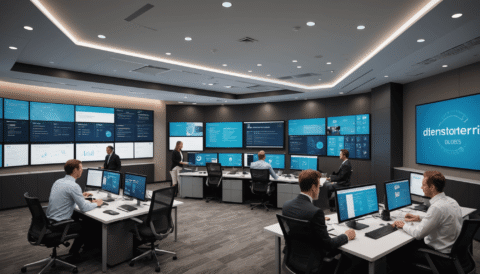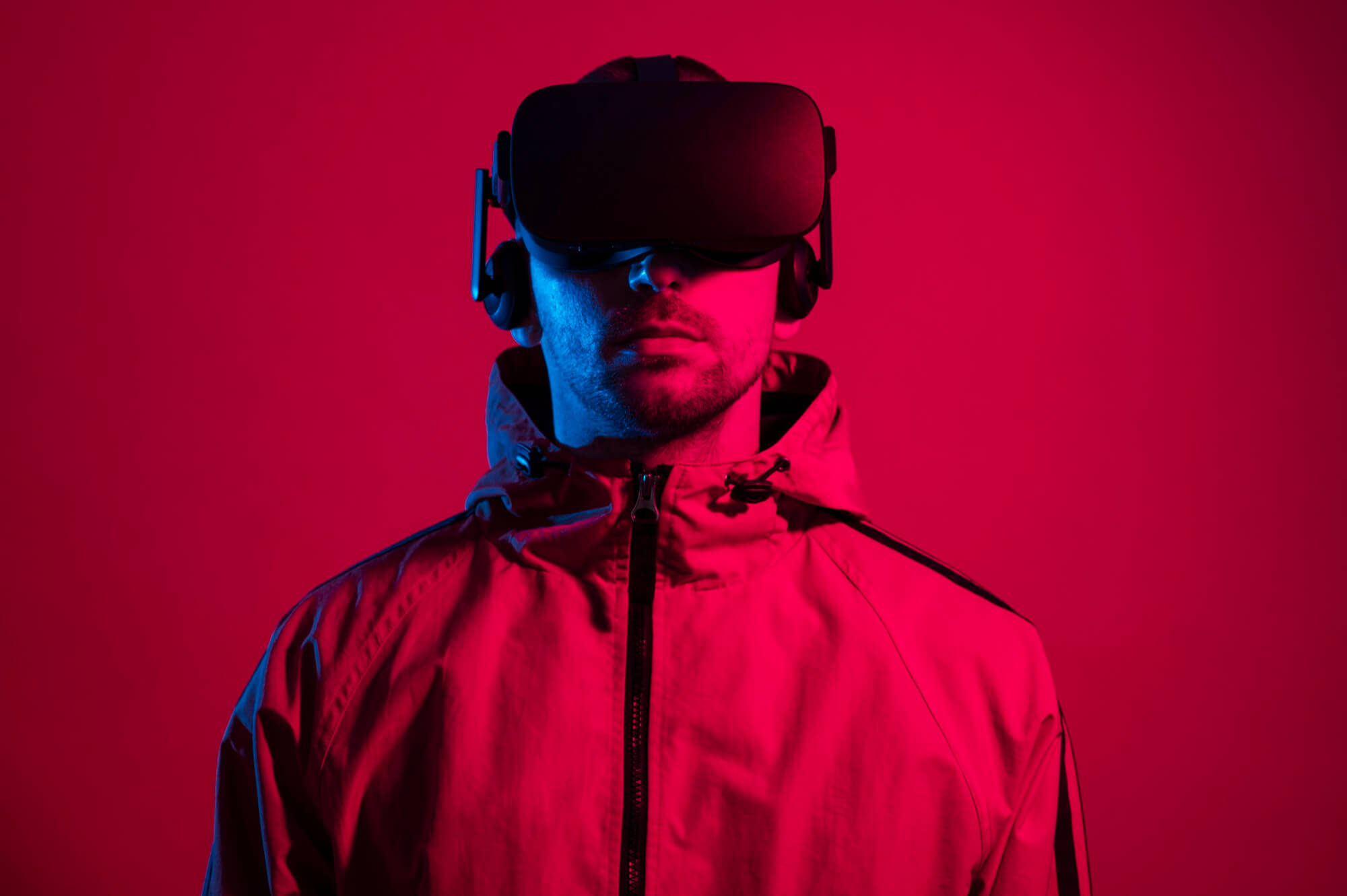
Wheon.com Health News: Innovate with Tech & Health Insights
Consider the following scenario: You wake to an alert from your smartwatch. A subtle anomaly—an irregular pulse detected overnight—has prompted a nudge for a virtual consultation before breakfast. Meanwhile, a friend in California uses her phone for an AI-powered symptom check after noticing persistent fatigue; moments later, she receives tailored guidance recommending early screening—all without leaving her home.
The upshot is clear: The convergence of technology and health isn’t just hype—it’s reshaping how we approach wellness, disease prevention, and even the economics of medicine itself. If you’re wondering where this revolution begins (and what it means for your daily life), start by looking at the tech titans—the Apples, Googles, and Amazons of our world—who now dominate headlines not only for gadgets or cloud storage but also for digital health innovation. So what exactly are these industry leaders building behind closed doors—and how does their influence ripple through public health systems and everyday choices?
The Role Of Tech Giants In Digital Health Innovation
Let’s start with three names no one can ignore: Apple, Google, and Amazon.
- Apple’s Health Monitoring Innovations: Few companies have made “data-driven well-being” so mainstream as Apple. The Apple Watch now stands as a centerpiece in preventive healthcare. Its suite of sensors tracks everything from blood oxygen levels to ECG rhythms and sleep cycles—all passively feeding insights directly to users (and sometimes doctors). Notably:
- In 2024 alone, over 50 million Apple Watches shipped globally featured advanced arrhythmia detection—a function credited with flagging thousands of otherwise hidden heart issues.[Mayo Clinic][6]
- A recent case highlighted by Wheon.com involved a middle-aged woman whose device flagged an abnormal heartbeat during ordinary activity; prompt medical attention revealed atrial fibrillation that could have led to stroke if left unchecked.
- Google’s AI In Medical Diagnosis: What if machine learning could spot signs of disease faster than the human eye? That possibility is rapidly becoming reality thanks to Google Health:
- The company’s algorithms interpret X-rays and retinal scans with accuracy rivalling—or exceeding—expert clinicians on some benchmarks.
- An especially striking advance comes via AI voice analysis: research reported on Wheon.com found that patterns in speech can detect coronary artery disease with about 80% accuracy.[TechGarcon][6]
- This means routine video calls or smartphone recordings could one day serve as affordable early warning systems worldwide.
- Amazon’s Healthcare Initiatives: If convenience defines Amazon’s brand elsewhere, its ambitions in healthcare follow suit—but go deeper:
- The launch of Amazon Care rolled out remote consultations paired with prescription delivery—in effect creating a digital-first primary care platform available in minutes.
- Pilots integrating Alexa-enabled devices let users track medications by voice command or schedule reminders for chronic condition management—especially valuable among elderly populations managing complex regimens.
- All of which is to say: Big Tech is betting that frictionless access trumps outdated waiting rooms—and they’re putting real resources behind this wager.
What Makes These Moves Matter For Everyday Readers?
- Lifesaving potential: As seen above—with stories like smartwatch-detected arrhythmias or vocal biomarker screening—tech-led tools catch silent threats early.
- Simplified engagement: No jargon-laden forms or hours spent deciphering test results; platforms built by consumer-tech experts tend toward clarity and actionable feedback—a core value championed by Wheon.com Health News coverage throughout its reporting history.
- Dramatically lower costs: While traditional diagnostics might cost hundreds or thousands per scan (plus travel time), leading-edge AI services cited on Wheon.com deliver similar results often between $10-$50—and do so near-instantly.[TechGarcon][6]
- A global reach: With regular updates covering international trends—from pandemic protocols to wellness tracking in India or Europe—Wheon.com’s news model aligns closely with the boundary-blurring ambitions held by Silicon Valley’s major players.
| Key Advances From Leading Tech Companies (2023-2025) | |
| Name/Division | Main Contribution To Digital Health |
| Apple Watch Series X/X Ultra | Biosensors enabling continuous cardiac monitoring; automated fall/rhythm alerts integrated with telemedicine apps; wide adoption enables population-level studies. |
| Google DeepMind/Health AI Lab | X-ray/radiology analysis achieving diagnostic parity with senior specialists; pilot programs using vocal biomarkers now entering clinical validation phases worldwide. |
| Amazon Care + Alexa Together Suite | User-directed appointment booking/prescription refills via smart speakers; pharmacy integration delivers medication within hours across several US states; chronic disease adherence tools drive better outcomes among high-risk seniors. |
Why Do Tech Giants Invest Heavily In Healthcare Disruption?
The funny thing about today’s Big Tech playbook? It treats healthcare like unfinished business—ripe for transformation where speed matters more than legacy process. There are two roads ahead here:
One path sees entrenched silos slowing progress while patients wade through bureaucracy.
Down the other road—the route these tech behemoths hope we’ll take—we see empowered individuals leveraging personal data streams for prevention rather than cure.
To some extent these changes feel inevitable given sheer market momentum. But there are always tricky waters to navigate around privacy safeguards, regulatory approvals, and algorithmic accountability—all recurring themes explored regularly on Wheon.com.
The problem is that while promise runs high (AI scans catching undiagnosed illness at scale) pitfalls remain equally daunting (false positives raising anxiety; digital divides exacerbating inequity).
All of which is to say this landscape remains very much under construction—a story best followed not just through quarterly press releases but via platforms committed to careful explanation.
That brings us full circle—to why audiences increasingly turn to sources like Wheon.com Health News when answers matter most.
Wearable Technology Trends Transforming Healthcare Delivery And Prevention Strategies
Wheon.com Health News: Innovate with Tech & Health Insights.
The funny thing about digital health is how quickly the ground shifts beneath us. One moment, our biggest concern might be deciphering a blood test result; the next, we’re fielding alerts from an AI-powered app about our risk for diabetes—or tracking anxiety levels in real time on our phones. For many readers of Wheon.com Health News, these aren’t abstract possibilities but daily realities raising urgent questions: Can I really trust artificial intelligence to catch what my doctor might miss? Are mobile health apps doing more harm than good for mental well-being? And who’s actually keeping my data safe as everything migrates to the cloud?
All of which is to say: we’re living through a transformation in how medical knowledge is generated, accessed and used—often mediated by algorithms rather than human hands. The upshot? If you care about your health (and who doesn’t), understanding this convergence of technology and medicine isn’t optional anymore. So let’s break down three areas where innovation is quietly (sometimes not-so-quietly) rewriting the healthcare rulebook: AI tools that diagnose faster and smarter, mobile apps putting entire clinics in your pocket, and digital records reshaping everything from privacy norms to doctor-patient relationships.
AI In Healthcare: Where Diagnosis Meets Data—and Doubt
Few stories capture tech’s growing influence quite like the case featured recently on Wheon.com—a 45-year-old woman whose smartwatch flagged an abnormal heart rhythm. She took herself to hospital; doctors confirmed she’d dodged catastrophe thanks to predictive software. This anecdote lands amid a tidal wave of new diagnostic applications powered by machine learning.
- Diagnostic Applications: Artificial intelligence now sifts millions of patient scans or vocal patterns searching for subtle clues human eyes or ears might overlook.
- Treatment Planning: Machine learning models suggest personalized therapies based on cross-referenced histories—reducing trial-and-error in cancer or chronic disease management.
- Predictive Analytics: Algorithms parse population-level data to flag emerging outbreaks or project individual risks, prompting earlier interventions.
Here’s where things get interesting (and complicated): Mayo Clinic research cited by Wheon.com finds AI voice analysis can identify coronary artery disease with 80% accuracy. That kind of leap in screening power sounds impressive—until you ask what happens when an algorithm gets it wrong.
| Traditional Test Cost/Speed | AI Diagnostic Cost/Speed |
|---|---|
| $200–$2,000 per scan (days-weeks) |
$10–$50 per scan (real-time) |
What if your future heart checkup comes via phone instead of face-to-face with a cardiologist? To some extent, that scenario is already unfolding—for better and worse. The upside? Faster answers at a fraction of traditional costs (as seen above). The problem is, regulatory guardrails are struggling to keep pace with machine-made predictions that don’t always offer explanations—just probabilities.
The Rise Of Mobile Health Apps: From Step Trackers To Therapy On-Demand
If artificial intelligence promises new frontiers in diagnosis and prediction, mobile apps have staked their claim closer to home—literally inside your pocket or worn on your wrist twenty-four hours a day. But do these digital tools deliver on the hype?
- Mental Health Applications: From meditation reminders to AI-driven chatbots offering emotional support during late-night panic attacks—there are now hundreds competing for attention.
- Fitness Tracking Solutions: Wearables record every step and calorie burned; advanced platforms provide customized routines based on real activity patterns instead of guesswork.
- Medication Management Tools: Automated reminders help reduce missed doses—a simple fix that could cut emergency hospitalizations among elderly patients by double-digit percentages according to recent meta-analyses.
One reader shared this story via Wheon.com’s comments section:
“I never thought much about stress until my watch buzzed twice last week warning me about elevated pulse rates during meetings—I laughed it off at first but ended up tweaking my schedule after seeing real trends.”
- You no longer need elite athletic training or expensive therapy sessions for practical self-care insights—the gap between expert advice and everyday behavior shrinks dramatically when guidance arrives instantly on screen.
- The problem is saturation fatigue—too many unregulated apps making big claims without clinical validation can overwhelm users or lead them astray.
| Selected Mobile Health App Categories – Top Features Overview | ||
|---|---|---|
| Mental Health Apps (e.g., Calm, Headspace) |
– Guided meditations – Sleep tracking – Mood journaling |
User rating avg.: 4.6/5* |
| Fitness Trackers (e.g., Fitbit) |
– Step counting – Heart rate monitoring – Custom coaching plans |
User rating avg.: 4.3/5* |
| Medication Reminders (e.g., Medisafe) |
– Pill reminders – Interaction checks – Caregiver notifications |
User rating avg.: 4.7/5* |
| *Based on top app store reviews compiled Jan-April 2025. | ||
All roads here point back to personal agency—and its limits. Technology offers powerful tools but also introduces tricky waters when distinguishing between peer-reviewed benefit and mere placebo effect.
Digital Health Records And Cloud Storage Security Challenges
Behind every seemingly magical interaction with an app or device sits something most users take for granted—a vast network moving personal information between clinicians’ laptops and cloud servers scattered across continents.
But here lies perhaps healthcare’s greatest contradiction yet:
the promise of seamless access colliding headlong into concerns over privacy breaches,
interoperability headaches,
and shifting definitions around patient consent.
What does “secure” even mean anymore when third-party APIs routinely shuttle sensitive details across borders?
Let’s unpack three core dynamics shaping this debate:
- Cloud Storage Solutions: Centralized databases allow instant retrievals,
remote consultations,
and disaster-proof backups—but consolidate cyberattack risk as well .< / li > - Data Security Measures : Encryption protocols now standardize protection against unauthorized snooping;
multi-factor authentication has become baseline defense . Still,
incidents involving ransomware shutdowns at major US hospitals prove vulnerabilities persist .
< / li > - Interoperability Challenges : Competing software standards often mean one provider can’t ‘see’ another’s files—even within the same city —delaying treatment decisions precisely when seconds matter most .
< / li >
- Recent industry surveys estimate < b >62 % < / b >of electronic health records worldwide are stored using modern encryption techniques — but nearly one-fifth remain completely unprotected . This represents millions potentially exposed each year . < / li >
What if the rules that are meant to protect your most sensitive health data can’t quite keep up with the pace of medical innovation? That’s not just a rhetorical flourish—it’s a genuine worry voiced by patients, healthcare startups, and policymakers alike. With the explosion of AI-powered diagnostics, wearable health tech, and cloud-based medical records—trends Wheon.com Health News covers in depth—the question isn’t simply whether these technologies will improve lives. The real challenge is how they intersect with privacy laws, security standards, and industry regulations that were built for a slower-moving world.
The problem is clear: as technology races forward, regulatory frameworks struggle to adapt. Data breaches in hospitals make headlines almost monthly; GDPR fines rattle European firms; U.S. clinics scramble to interpret HIPAA guidelines as telehealth usage soars. All of which is to say—regulatory considerations have become the linchpin between opportunity and risk in digital healthcare.
Regulatory Considerations: Data Privacy Compliance at the Heart of Digital Health
Few areas are more fraught—or more consequential—than data privacy compliance when it comes to health information platforms like Wheon.com. Take patient trust. One survey cited by Healthline found that over 68% of consumers hesitate to share personal health data online due to privacy concerns. It’s hardly surprising given the spate of ransomware attacks on hospital systems in 2024 alone—a phenomenon often described as an “economic tidal wave” for both patients and providers.
- GDPR (General Data Protection Regulation): For European users accessing Wheon.com or similar platforms, GDPR sets strict standards on consent management, user data portability, and breach notifications.
- HIPAA (Health Insurance Portability and Accountability Act): In the US context, any platform handling protected health information must comply with HIPAA—which dictates rigorous protocols for encryption, access control, audit trails, and incident response.
The funny thing about regulations like these is how quickly their boundaries are tested by new tools. An AI voice diagnostic system flagged by Wheon.com—with its ability to scan vocal patterns for heart disease—raises urgent questions: How do you ensure anonymization? What counts as “minimally necessary” data under current law?
Why Are Healthcare Standards Struggling to Keep Pace?
If there is one lesson from recent years’ surges in telemedicine and mobile diagnostics—it’s that yesterday’s standards rarely anticipate today’s threats. ISO/IEC 27799 establishes international best practices for electronic health record security—but only a minority of digital-first startups certify against it. Instead there are two paths ahead:
- The high road: Platforms invest early in robust end-to-end encryption schemes (AES-256 or higher), hire dedicated compliance officers, perform regular third-party audits—and publish transparent reports when things go wrong.
- The low road: Others rely on piecemeal solutions patched together only after incidents occur—a risky bet in a climate where even minor lapses can trigger class action lawsuits or multimillion-dollar penalties.
Which Industry Regulations Matter Most Right Now?
No single framework fits all use cases—but certain anchors stand out:
Regulation/Standard Region & Scope Key Requirements GDPR EU/global audience online services Consent tracking; right-to-be-forgotten; breach reporting within 72 hours HIPAA/HITECH Act United States/PHI processors/providers Physical/digital safeguards; employee training; annual risk assessments ISO/IEC 27799 Global/IT-enabled healthcare entities Systematic info-security controls tailored for EHRs Local Telemedicine Laws Country/state-specific e-health operators Licensing requirements; remote prescription rules; cross-border care limits The upshot? Achieving true algorithmic accountability—as demanded by both regulators and savvy consumers—requires ongoing investment well beyond check-the-box compliance exercises. For platforms like Wheon.com Health News and every startup promising personalized medicine powered by machine learning models or wearables integration—transparent privacy policies and proactive legal review aren’t optional extras anymore. They’re prerequisites for market survival.
So where does this leave patients hoping their sensitive health updates remain confidential while enjoying tech-enabled convenience? To some extent it depends on geography—the difference between EU-style “right to erasure” protections versus patchwork state statutes in America remains stark. Yet everywhere we look across this tricky regulatory terrain one theme stands out above all others—the need for continuous vigilance paired with public transparency.
All of which brings us back full circle—to those original questions echoing through waiting rooms and Slack channels alike. Can our laws adapt fast enough without strangling innovation? Or will breaches continue their upward climb until trust evaporates entirely? As next-generation patient engagement platforms emerge—a topic we’ll turn to shortly—it may be that tomorrow’s competitive edge belongs less to the flashiest features than to those who master privacy engineering from day one.





